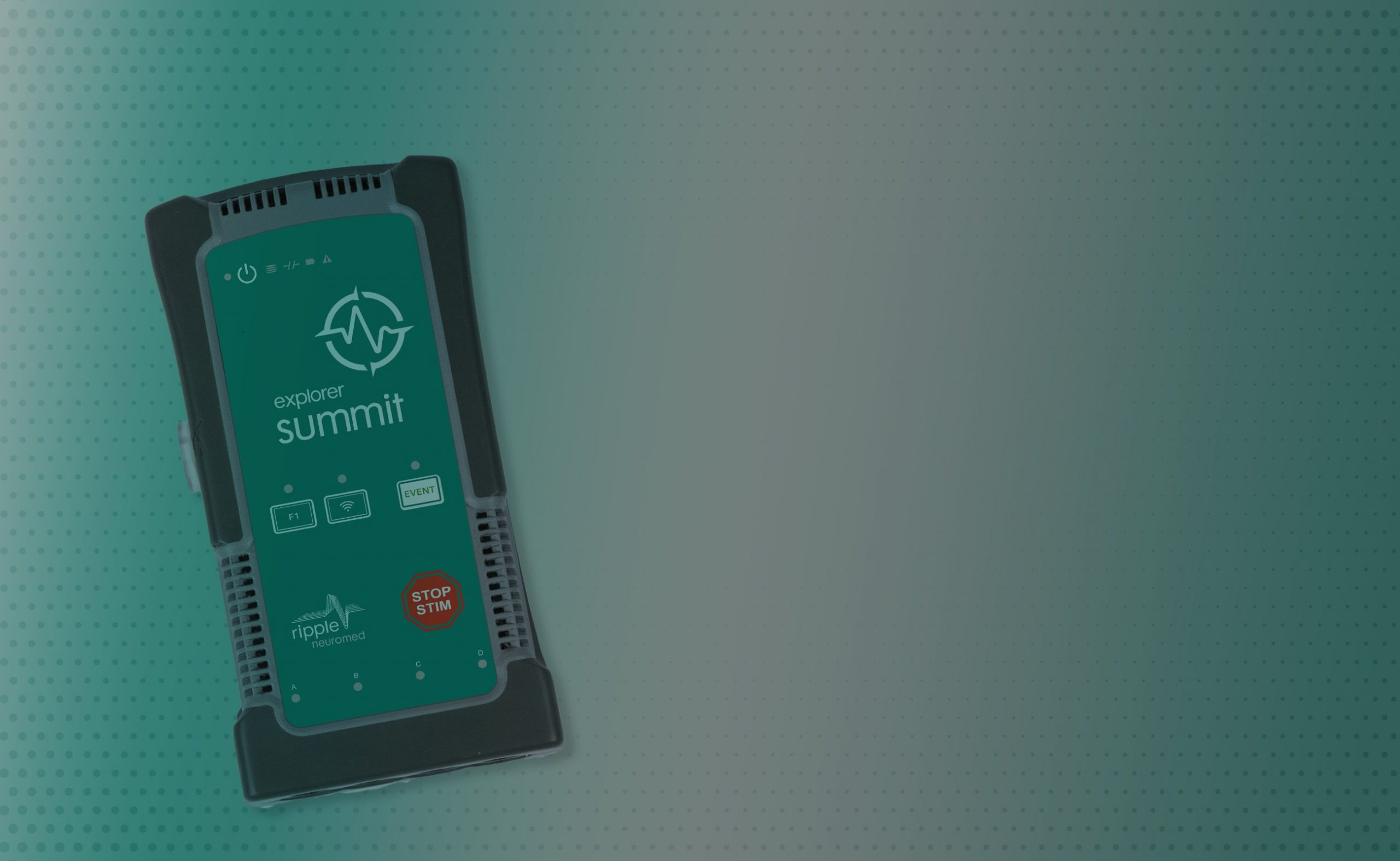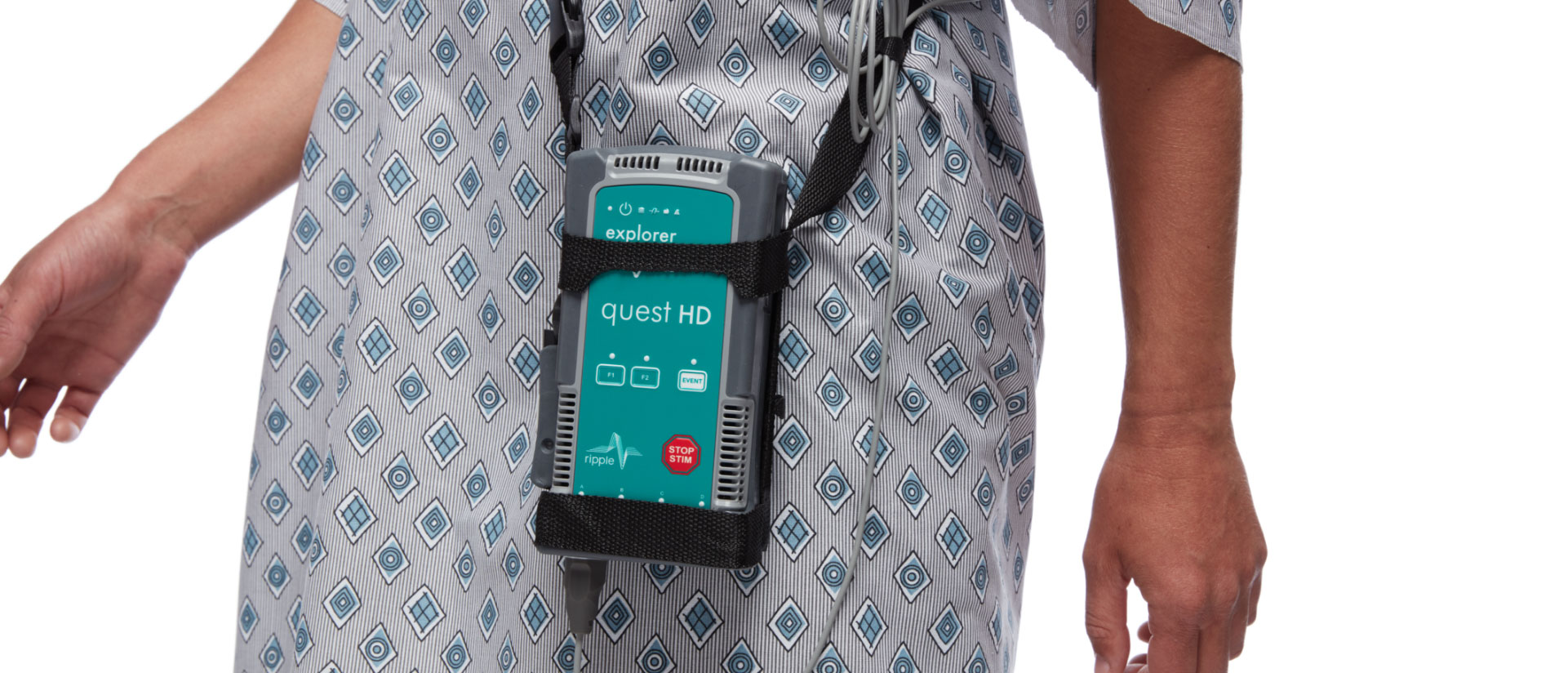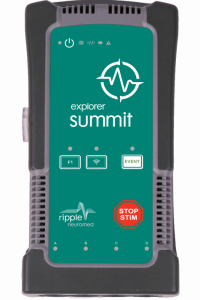EMU/ICU Research Stim & Recording
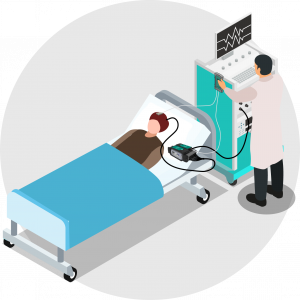
BCI/Prosthetic Development
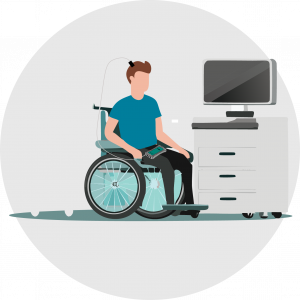
Intraoperative Stim & Recording
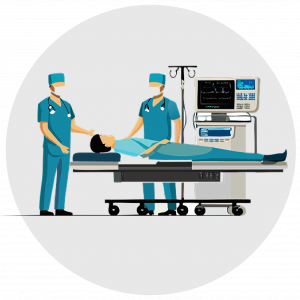
512 CHANNELS
UP TO 30 kHz SAMPLING
CLOSED-LOOP STIMULATION
Portable – 700 grams. Easily transport between hospitals or laboratories.
Versatile – dedicated front ends. simultaneous stimulation and recording for any experiment.
Wearable – wireless communications. integrated battery. on-board storage. pack it up and go.
Seamless Setup – set up and begin recording in minutes.
REAL-TIME, CLOSED-LOOP CONTROL – PROGRAMMATIC CONTROL. REAL-TIME FEEDBACK. MATLAB & PYTHON APIs
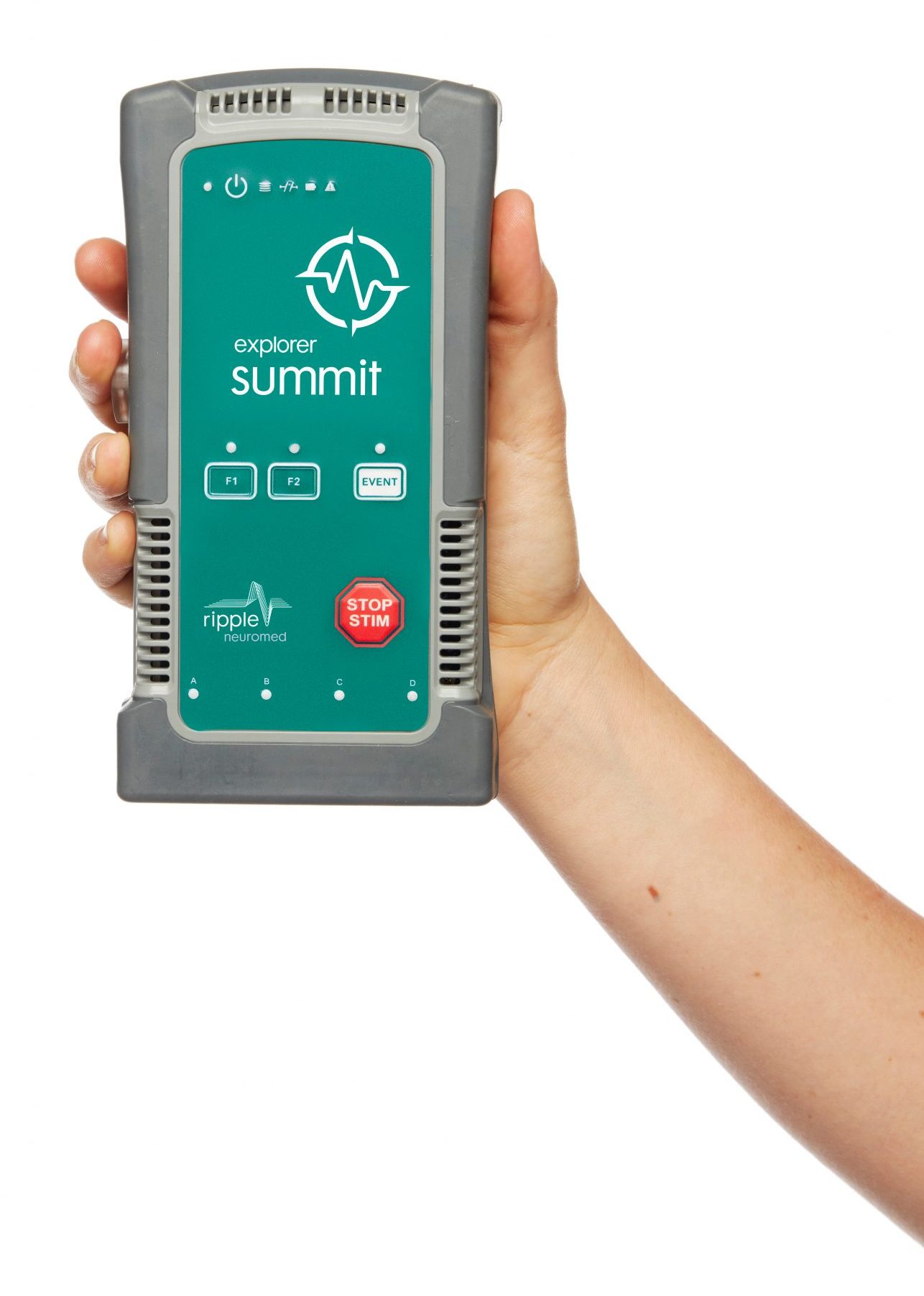
512 channels
Up to 30 kHz
sampling
Closed-loop
stimulation
SIMPLE – easy-to-use graphical user interface and straight forward hardware configuration allows you to set up your experiment in minutes.
VERSATILE – compatible with all major types of electrodes and clinical neuromonitoring systems. configurable stimulator and amplifier selection supports a variety of research paradigms.
PORTABLE – 700 grams. Easily transport between hospitals or laboratories. wireless communications. integrated battery. on-board storage. pack it up and go.
PROGRAMMABLE – intuitive MATLAB & PYTHON APIs allow rapid development of real-time closed-loop algorithms for advanced experimental paradigms.

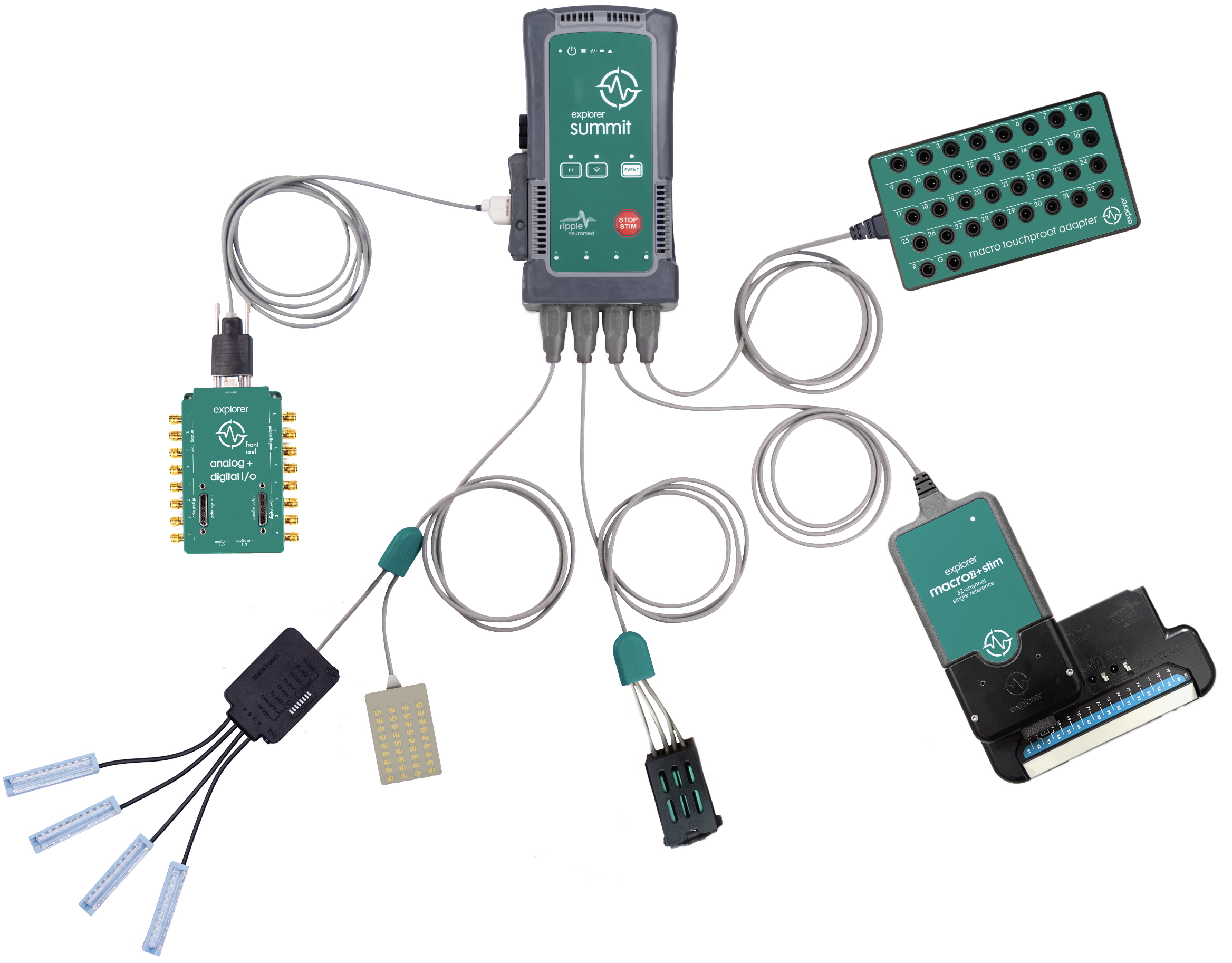
Use any electrodes
Compatible with Macro and Micro, Clinical and Research Electrodes
Interface
any clinical
system
without disrupting patient care
Run any
experiment
Supports a Wide Range of Research Paradigms
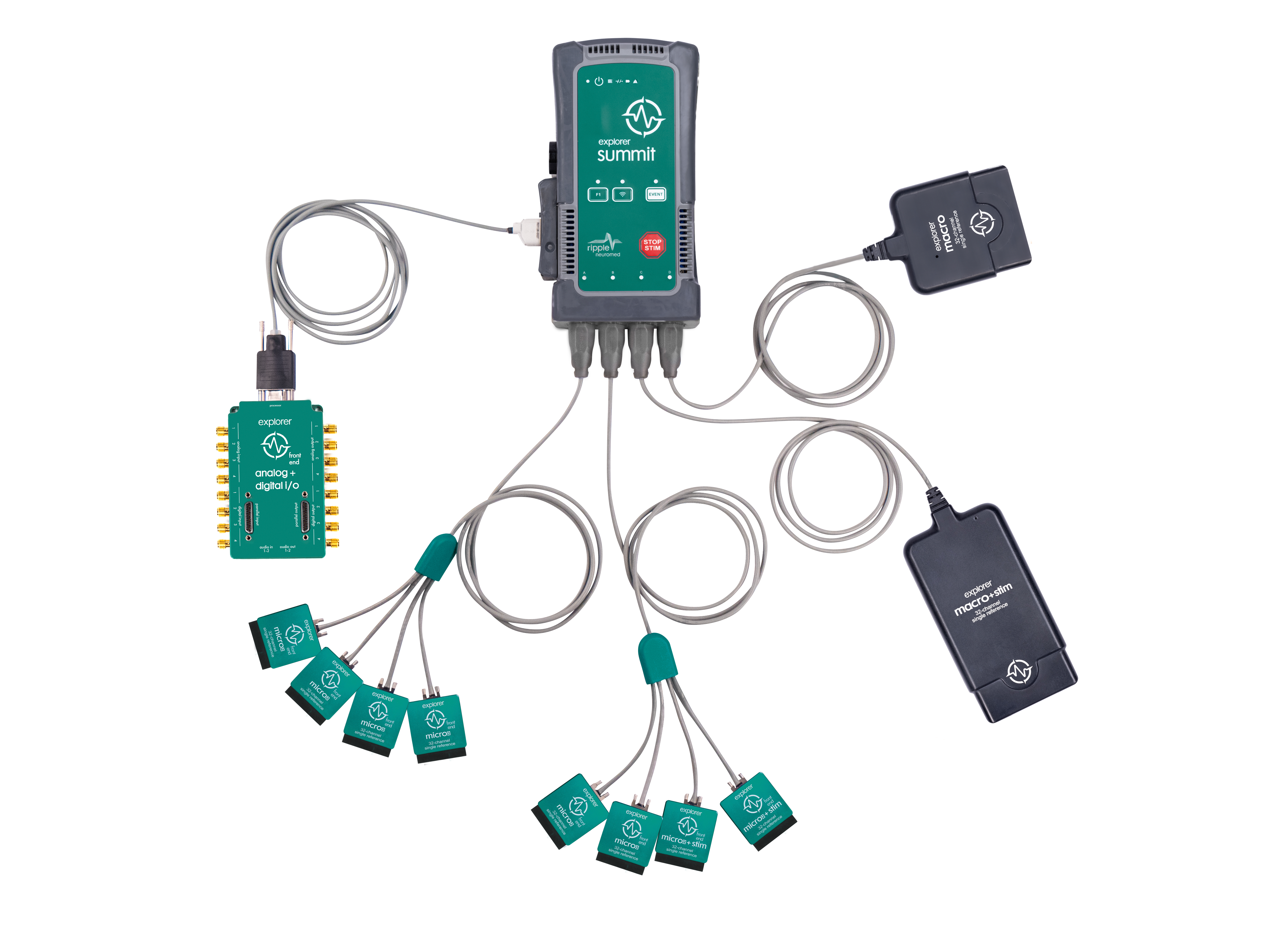
The Explorer System
Modular Design for Specialized Applications
Choose from a variety of individual components to build a system as unique as your applications.
An Explorer processor and a single Front End are all you need to start recording.
Additional Front Ends can be added to increase the number of recording channels or to acquire different physiological signals. Connect an I/O module to control or communicate with external devices through analog and/or digital inputs and outputs.
Link two processors together and operate them as a single system for high channel counts (up to 1024) or for applications such as hyperscanning.
Powered by a wall outlet or internal battery. External batteries are available to extend untethered operational time.
Can be controlled by a computer using an ethernet cable or via Wi-Fi to eliminate cables.
Run the system independently of the computer by preprogramming your experimental controls. Front buttons can be programmed to load custom software or provide feedback during operation.
Extending the range
of human experience
Ripple Neuromed creates game-changing neurotechnology to help researchers explore and understand human nervous system function

Optimized Data
Acquisition
Electrical
Stimulation
Real Time
Processing
Wireless Data
Transmission
The Explorer Quest and Summit Systems
Flexibility and advanced technical features are designed into every system we manufacture. Using custom chipsets and leveraging decades of engineering refinement, Ripple Neuromed has developed the Explorer Quest and Summit systems to optimize data acquisition, electrical stimulation, real-time processing, and real-time wireless data transmission.
- A range of front ends
- Specialized for EEG, EMG, ECoG, sEEG with
- Integrated stimulation
- 512 channels
- High resolution electrophysiology data
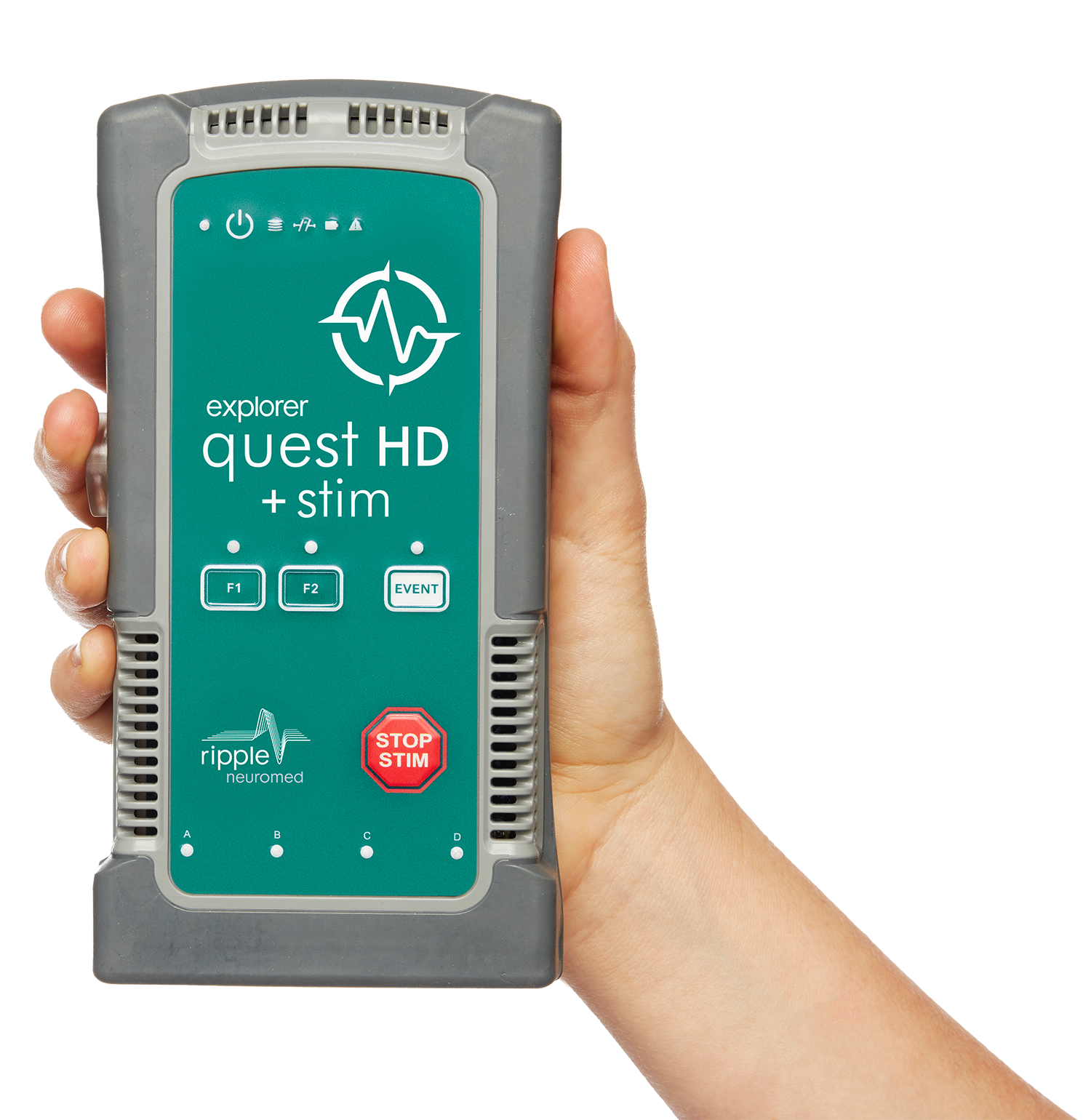
Publication Highlights:
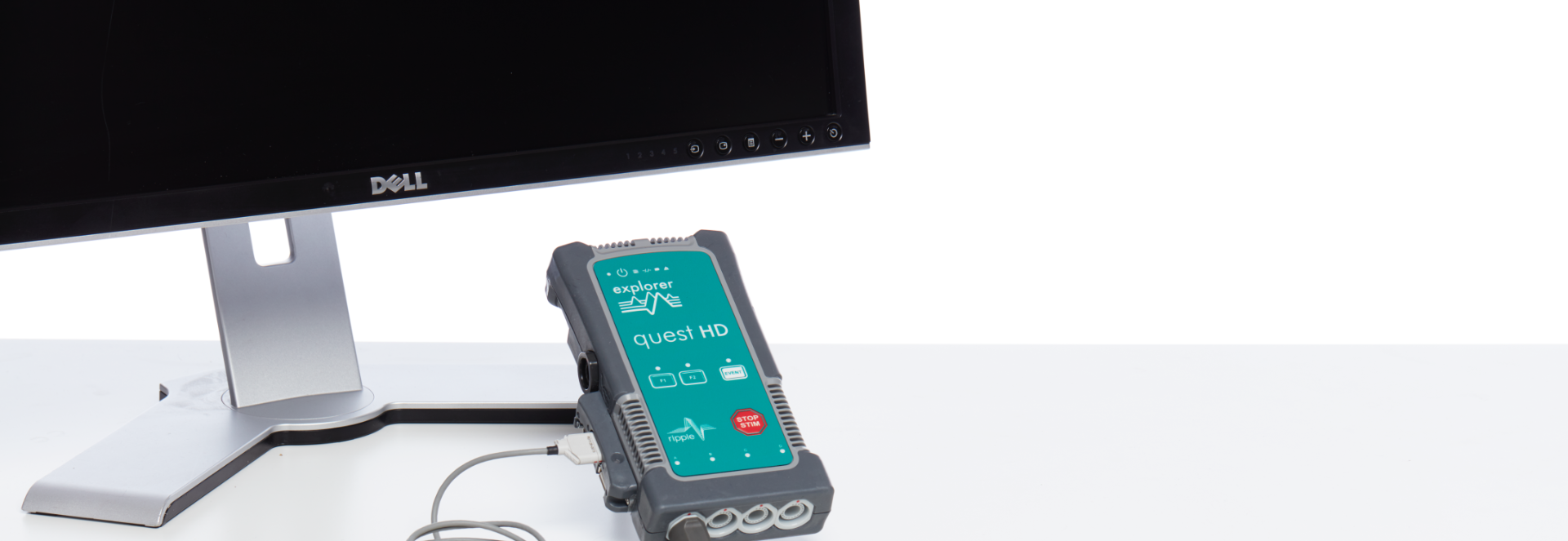
The Processor
One Explorer Line, Unlimited Possibilites
The Summit
With the Summit Explorer processor featuring the same industry-leading core technology, we’ve made it easy to build a system around your specific applications.
The Summit is compatible with all Explorer Front Ends and can record up to 512 channels, making it perfect for invasive and high channel-count applications.

Modular Physiological Amplifiers and Stimulators
for Custom Neuroscience Experiments
for Custom Neuroscience Experiments
The Explorer line offers four distinct families of Front Ends to provide ideal recording and stimulation capabilities for any modality. Designed with optimal technical specifications for each recording modality in mind, the four families are the EEG, the Macro, the Micro2, and the Physio. Mix and match Front Ends on the same processor to increase the number of recording channels and record additional physiological signals.
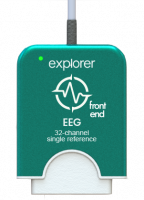
EEG and EEG+tES
Designed with EEG specifically in mind, the EEG family of Front End can be used with nearly any non-invasive surface electrode and is ideal for surface recordings that do not require bipolar or true-differential referencing. For stimulation, the EEG+tES Front End can deliver transcranial (tES), transcutaneous nerve (TENS), or spinal stimulation (TSS) through the same surface electrodes used during recording.
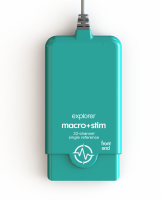
Macro and Macro+Stim
The Macro family of Front Ends was designed to easily connect to standard clinical invasive electrodes. Recording specifications are optimized for applications such as high-resolution ECoG or sEEG. The Macro+Stim Front End features a maximum stimulation current that matches common clinical stimulators, while incorporating novel safety features to prevent excessive discharge.
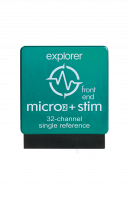
Micro2 and Micro2+Stim
Ideal for high-resolution, invasive recordings, the Micro2 family of Front Ends is optimized for use with high-impedance microelectrodes and can record single-units. Stimulate and record on all 32 channels simultaneously with the Micro2+Stim for unparalleled stimulation capabilities.

Physio and PhysioD
The Physio family of Front Ends was designed specifically for electromyography. Perform shared reference or true-differential recordings with the 32-channel Physio or the 16-channel PhysioD. Both variations feature technical specifications that are ideal for any type of electrophysiology from the body, such as ECG or non-invasive peripheral nerve recordings.
Explorer Analog and Digital I/O Modules
Where Electrophysiology Meets Behavior
Connect to third party research devices with the Explorer I/O modules.
Use any of our three available configurations: the Explorer Analog I/O, the Explorer Digital I/O, and the combined Explorer Analog + Digital I/O, to seamlessly integrate stimulus presentation systems, eye tracking systems, devices for user feedback, force transducers, external stimulators, and more with your Explorer processor. Combine the Analog I/O and the Digital I/O modules for 28 analog inputs and output and 20 digital inputs and outputs. If that’s more than you need, the combined Analog + Digital I/O module provides a condensed version in a single package.
The Analog I/O and Digital I/O modules can be used independently or together. The Analog + Digital I/O module cannot be used with another I/O module.
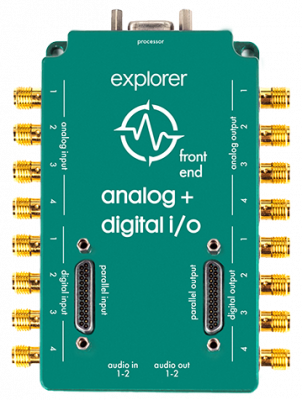
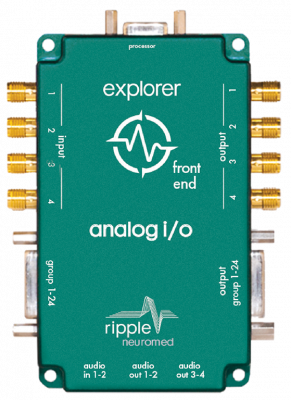
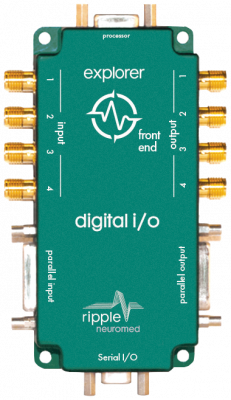
The Trellis Software Suite
A Proven Data Acquisition Platform
Visualize and sort both surface and cortical signals with a series of simple and intuitive Trellis applications.
Make real-time measurements with the Impedance Analyzer to quickly and accurately check the impedance of your electrodes. Control stimulation on the fly with sub-millisecond precision using the Stimulation Controller. Featuring an integrated Video Monitoring application, Trellis can capture behavioral data with any number of USB cameras while recording electrophysiology data.
Supported for Microsoft Windows (7, 10), Mac OSx (10.7-10.13), and Linux (Ubuntu 18.04), Trellis has minimal operating requirements, enabling you to keep your preferred computer and operating system.
Stream data from your Explorer processor to multiple computers running Trellis EEG Software using Ethernet or Wi-Fi so everyone can keep an eye on the recordings.
Features
- Real-time data visualization
- Flexible channel assignment and mapping
- Continuous impedance measurements
- Customizable filters on display streams
- Trigger and device synchronization
- Programmable stimulation via APIs
- Simultaneously record data and video
- Stimulation controller
- Online spike sorting
- Save and load configuration files
- Standardized file format
- Well-documented APIs for real-time processing
REAL-TIME & OFFLINE ANALYSIS
Trellis Software Suite includes comprehensive APIs for both MATLAB and Python. Use Ripple Neuromed’s Xippmex (MATLAB) and XippPy (Python) toolboxes to develop custom data processing in real-time. Seamlessly communicate data between the Explorer processor and your custom code in MATLAB or Python for flexible stimulation control and closed-loop neuromodulation studies.
With a number of supported toolboxes for offline analysis, getting your data into publication ready format has never been easier. In addition to our native file format (NEV), Trellis gives users an option to save directly to EDF+ for use in other analysis software such as Persyst. Support for other file formats can be added by request.
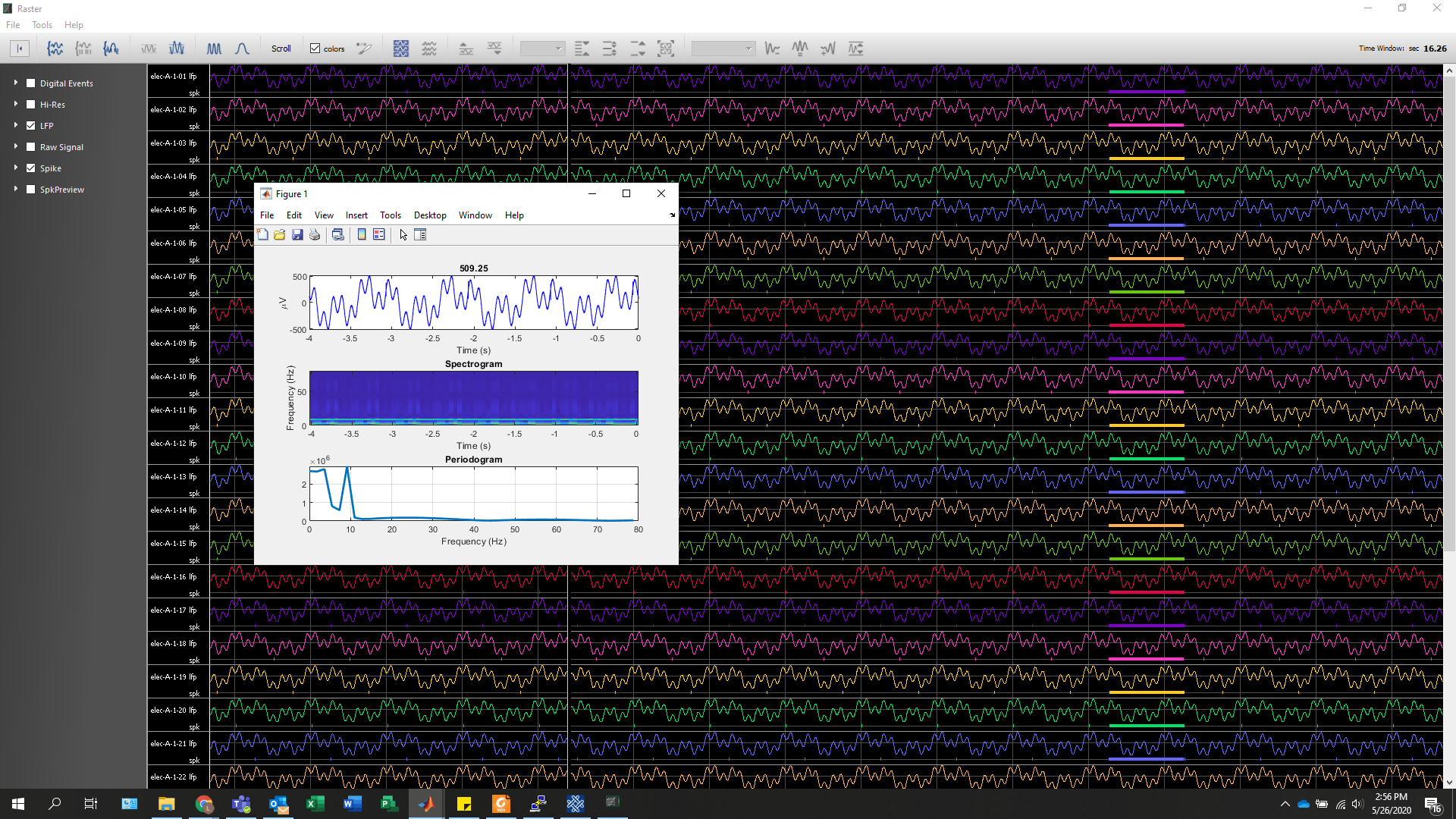
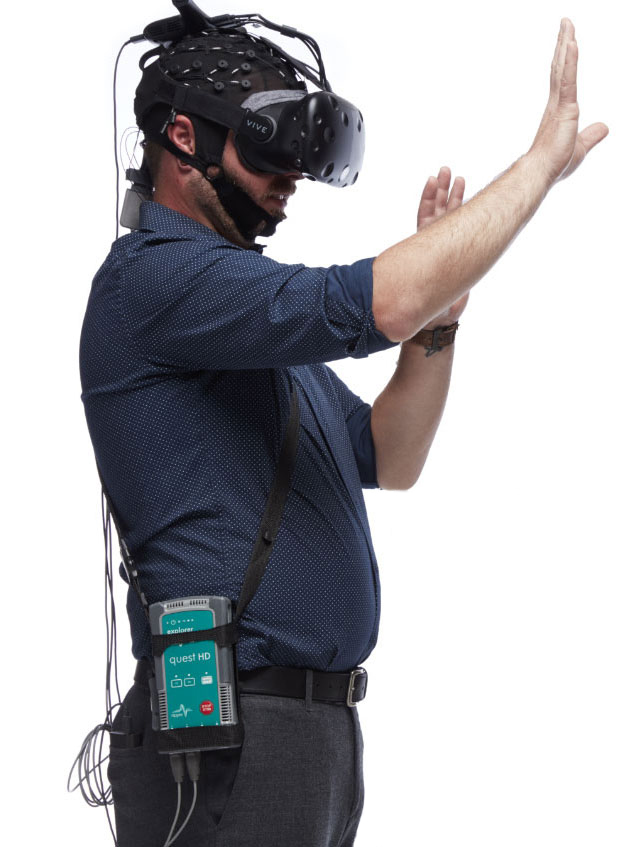
A COMPLETE MOBILE EXPERIENCE – CODE ON THE BOX
Create a truly one-of-a-kind HD wearable and mobile platform experience with Ripple Neuromed’s “Code on the Box” software module.
“Code on the Box” maximizes flexibility and portability of you Explorer processor by utilizing the processor’s internal computer; allowing you to run custom experimental control scripts and save data directly on the Explorer without any need for a computer.
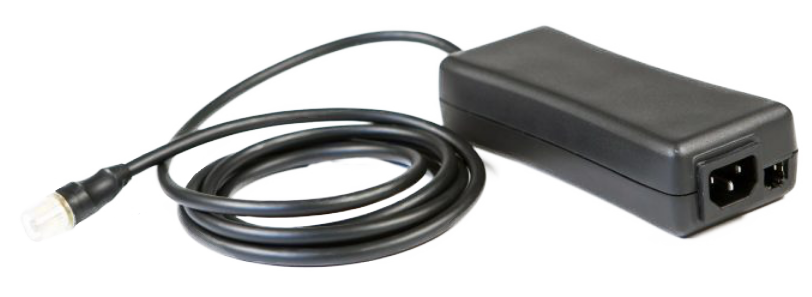
Connectivity
Power and
Ethernet
Wired power and communication
Each Explorer processor comes with a power supply to connect to a wall outlet for uninterrupted, wired power. The supply includes a standard Ethernet jack for wired communication to a computer or network.
For wireless operation, Explorer processors include an internal battery, internal data storage, and Wi-Fi communication. Extend wireless operation with an external battery pack.
